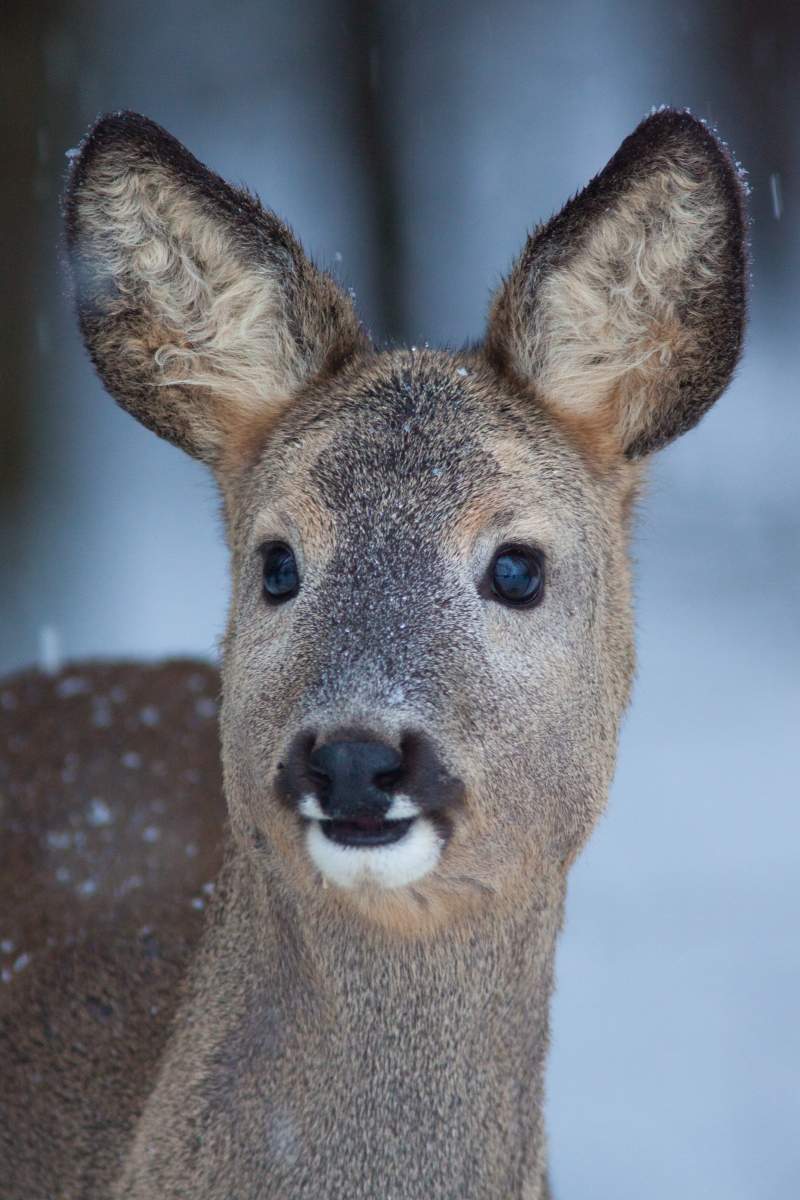
Photo: Tarmo Mikussaar
Posted by the Animal of the Year Team (13.01.2017 in Estonian)
Roe deer inhabited the Estonian area already nearly 10 000 years ago: bones found in ancient settlements bear witness to this; from it also follows that the species was a target for hunting for the inhabitants here. It is true however that compared to elk and beaver the share of roe deer in the prey was small. From time to time, evidently influenced by climate changes, the species retreated southwards. This happened in the 16th–17th centuries. Coming back took time. It was not until written sources of the 18th and early 19th century, with Hupel, Fischer, Hueck et al as authors, that the reappearance of roe deer in the Estonian areas is noted. Expansion of their area in the early 19th century was hindered by the abundance of wolves. Local authorities began to encourage the destruction of wolves which brought a decrease in their number and an increase in the numbers of their prey animals. The northern limit of the range of roe deer reached Tartu again in the middle of the 19th century and at the turn of the century the Gulf of Finland. The population of roe deer grew until the severe winter of 1915/1916 suddenly stopped this development. Due to poaching after the war the population number stayed low for several more years. Gradually the anarchy (in hunting as well as other areas of society) was overcome and the population of roe deer again started to increase against a background of a low number of predators. The mild winters were also favourable. In 1939 nearly 22 000 roe deer were counted in the state forests which made up about 80% of all forests. Based on knowledge today it can be confidently stated that the actual number was much greater, as well as that the present population certainly is smaller than then. Severe winters again stopped the increase of the population. The winter of 1939/40 was probably the harshest of the century and those following were not much milder. Twenty years later the population started to increase again, slowly initially but then at an accelerating rate, reaching the historically highest level in the mid-1970’s. How this should be quantified precisely is outside the scope of this text. It can however safely be stated that the result of the official census – 60 000 individuals – can be multiplied by 2, perhaps even by 3. The background to such a ”demographic explosion” was the snowless winters of the 1970’s that made a nearly limitless supply of food available in the shape of the winter grain sprouting in the kolkhoz and sovchoz fields. The intense forest felling (and surely also the August storm of 1967) primarily enriched the food basis of elks, but certainly also that of roe deer in forest habitats. And of course what happened was also favoured by the lowest number of large carnivores in the century during these years. In the dense population diseases started to spread. Very common in those years was a kind of diarrhoea (“pasatõbi”) that exhausted and sometimes even killed the animals. The full cause cannot be explained here but at least in part it can have been due to helminths (parasitic worms). Veterinary specialist Toivo Järvis (now professor emeritus) studied the problem in the 1970’s and found altogether 28 species of helminths in Estonian roe deer. Comparing the number of the parasitic worm species and the number of individuals (termed the extension and the intensity of the invasion respectively) in shot versus perished roe deer he found on average a greater number among the last group. During the 1976/1977 winter that was colder and snowier in comparison to the previous favourable ones but rather average seen on a longer time scale, a very large number of roe deer perished. The population was relatively stable onwards but decreased again in the turbulence of the first half of the 1990s (which also brought along an increase in poaching) and the abundance of predators The latest peak period of the population number was in the year 2007-2009; this was ended by the two snow-rich winters of 2009/2010 and 2010/2011.
The population density of roe deer in Central Europe is highest in Germany, Austria, Denmark and southern Sweden, reaching several hundred individuals per 1000 hectares. In comparison the population density of roe deer in Estonia is tenfold lower and can be generally be measured in tens of specimens per 1000 hectares, surpassing a hundred individuals only at the periods of maximum population density in the best habitats. Why such a difference? Firstly because the climate in Central Europe is more suitable to roe deer, secondly because large carnivores are absent, or present in significantly lower numbers than in Estonia. Certainly the population density of roe deer in Central Europe too is constantly changing but this is not comparable to the dramatic rises and falls in the abundance that has been experienced in Estonia
Tiit Randveer


